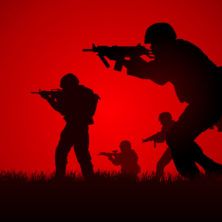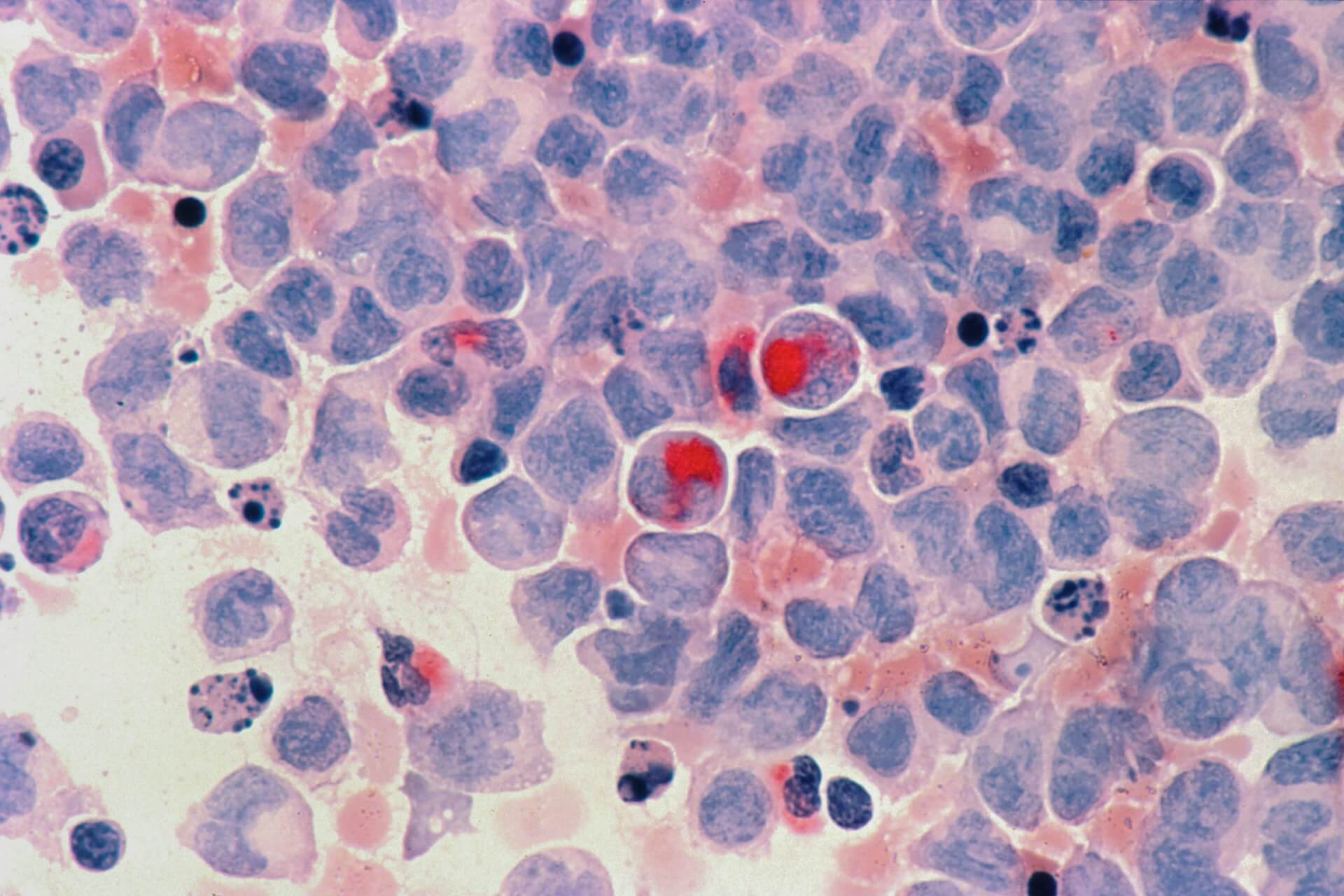Is it acceptable to make fun of enemies’ deaths? Why is it dangerous to treat terrorists as computer game characters? Three years after the beginning of the war, more and more questions are arising on the ethics of media coverage of the warfare.
There were half a million views and thousands of shares of the news item by Channel 5, in which Vitaliy Haydukevych was making fun of mercenary Givi’s death for over a minute: “A formal meeting of rebel leader Mikhail Tolstykh (“Givi”) and Arsen Pavlov (“Motorola”) took place. The beginning of the meeting was explosive. At 6.12 am. The meeting itself was quite warm, the office burnt to ashes,” starts the TV host. Then he reports the militants confirmed “Givi repositioned to hell” and “eventually joined the ceasefire regime and Minsk agreements implementation” in the footsteps of Motorola. Later Ukrinform called this TV news item “a top-quality trolling.” Channel 24 started its parody TV program Vesti.UA with the words, “As if it was a little bird a Shmel rocket-launcher told us a compelling news.” With a cheerful smile on his face, the host continues, “Let’s start with a piece of good news. Another one leader of Donetsk militants burnt out at work. This isn’t about bribery – he burnt out literally.” TSN news program confined oneself to the title “Givi” Followed “Motorola” on His Way to Hell.
It is hard to raise voice against making fun of enemies’ deaths in news spots and not to look like an advocate of Russian mercenaries, killers, and terrorists. Is there a reasoned explanation why it is inappropriate to play metaphorically with enemies’ deaths in the news format?
After the first “war broadcasted live” (Iraq, 2003), scholars started posing questions that had never been highlighted in the context of media and war before. How do the media cover the wars? How do the mass media manipulate with deaths? Can the media eventually influence the tide of war through its dramatization of “disinfection”? None of these questions has a complete answer. If there is one someday, it will be only in the past tense since the media are changing too rapidly and their interaction with the audience is transforming dynamically. So, it is possible to analyze the phenomena that have been studied so far and try to make sense of where they would lead us. In very lay terms, there are two poles of the work of the mass media, both can be dangerous for the audiences. On the one pole, there is compassion fatigue [1]. On the other one, there is a war without deaths – having the potential to show us real war, the media paradoxically “clean” it from unpleasant representations and images [2].
On the one pole, there is compassion fatigue [1]. On the other one, there is a war without deaths – having the potential to show us real war, the media paradoxically “clean” it from unpleasant representations and images [2].
Compassion fatigue is a term previously applied to specialists that work with trauma on a daily basis: therapists, doctors, police officers and others. Since recently, this term is referred to lessening of compassion to tragic events among media audience. At first, the audience is horrified with the tragedy of war. But when there is an infinite stream of war, destruction, deaths, and injuries – it’s getting more and more difficult for the viewer to feel this pain. The compassion fatigue syndrome manifests itself.
“The media have a special responsibility to the public, and when they abdicate this responsibility and the public lapses into a compassion fatigue stupor,” writes Susan D. Moeller that studies this phenomenon [1].
On the opposite pole of compassion fatigue is a disinfected war. It is a war without dying, in which civilian casualties are no more than numbers, while photos capture brave strong soldiers and shiny military equipment. Moreover instead of real photos, the audience can be treated with simulated graphic images of troop disposition and tide of battle.
“Whilst modern media technology has the potential to permit us to see more details of warfare than ever before, and whilst fictional representations of warfare, and of violent acts in general, have become ever bloodier and more explicit, non-fictional ones have become increasingly restrained and sanitized,” [2] writes a researcher of media coverage of the Iraq war by the British and US media. Other researches that study the work of the media confirm this point: for example, more than 2,500 war images from U.S. media were examined in 2008 and it was found that only 10% showed injury or death [3]. In a similar way, Ukrainian audience often claims the war picture by Western media is too standardized and disinfected.
As they say: ‘war sells’. To sell well, the war should be interesting but not too traumatic. There should not be too many deaths of civilians or “boring” everyday life details of the armed conflict. I got free of compassion fatigue stupor when my sister showed me her notes on Vodiane village located on the front line – in the middle of her ruined apartment, a local woman was crying over Rehau-brand windows she had dreamt of and just installed before the war. It is easier to sell epic battles than details of everyday life in wartime. It is better not to show civilians behind enemies’ faces. To sell the war, you should dehumanize it.
It is easier to sell epic battles than details of everyday life in wartime. It is better not to show civilians behind enemies’ faces. To sell the war, you should dehumanize it.
The statement ‘enemies are humans too’ inspires a particular resistance in discussions. Why to speak of mercenaries that have been killing Ukrainians for years as of humans? The fallacy of this point is particularly clear when it comes to “Givi’s” death. The above-mentioned news stories present separatist commanders Motorola and Givi as hilarious computer game characters. Feeble and clumsy, they went to hell. At the same time, there is video evidence of Givi engaged in torturing the captives. This is a part of his personality, too. He was not a fiction character, “baked Givi”, as the title of the news story on Channel 24 called him.
And if “the media do have the power to influence policy responses to conflict” [4], isn’t it reasonable to rehumanize an armed confrontation and try to show the war as it is, at least in the TV news stories and not to go as low as making up stories of funny burning enemies and legends about invincible good guys of steel?
Such an epic can exist anywhere beyond the news stories. It should not enter the news items. It is not a “top-quality trolling”. This quality isn’t top. It’s trolling of ourselves.
Notes
[1] Moeller, S. (2013). Compassion fatigue: How the media sell disease, famine, war and death. Canadian Family Physician Médecin de Famille Canadien, 59(3), 265–8. Retrieved from
[2] Petley, J. (2003). War without death: Responses to distant suffering. Journal for Crime, Conflict and the Media, 1(1), 72–85.
[3] Silcock, B. W., Schwalbe, C. B., & Keith, S. (2008). “Secret” Casualties: Images of Injury and Death in the Iraq War Across Media Platforms. Journal of Mass Media Ethics, 23(1), 36–50.
[4] Hawkins, V. (2011). Media selectivity and the other side of the CNN effect: the consequences of not paying attention to conflict. Media, War & Conflict, 4(1), 55–68.
Attention
The author doesn`t work for, consult to, own shares in or receive funding from any company or organization that would benefit from this article, and have no relevant affiliations






